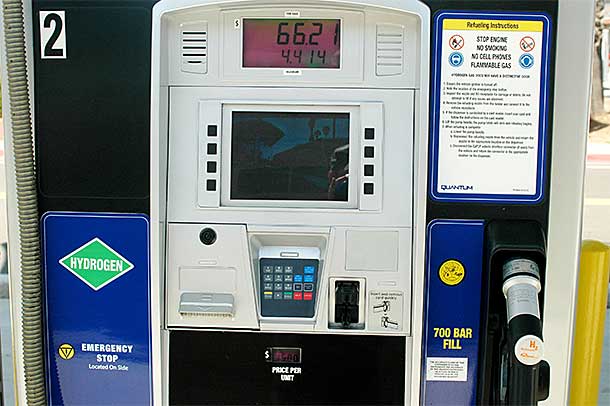
Critics of hydrogen fuel cell vehicles have often stated that building a hydrogen fueling station refueling infrastructure is overwhelmingly impossible. Even those who are neutral on hydrogen cars state the same concern.
So, let me present a couple of different models of H2 Refueing to reduce those fears.
High MPGe H2 Fuel Cell Vehicles
The first model is to build high MPGe (miles per gallon equivalent) hydrogen fuel cell vehicles.
It makes sense that:
-The higher MPGe vehicles will use less fuel.
-The less fuel needed, the fewer fueling stations needed.
-The fewer fueling stations needed, the less cost to build an H2 fueling infrastructure.
According to the Huffington Post, the average new vehicle mpg in 2014 was 24.1. According to FuelEconomy.gov the Mirai receives a combined rating of 66 mpge and the Hyundai Tucson receives 50 mpge combined mileage. This means that right now the commercial fuel cell vehicles are more than 2x as economical as the average fossil fuel burning vehicle. And this is just the beginning as more advances in fuel cell and yes, battery technology will lead to higher MPGe vehicles (and a need for fewer fueling stations).
A second model is the cluster model of hydrogen fueling stations, which is what is going on in California right now.

Cluster Model of H2 Fueling Stations
The cluster model simply states that hydrogen fueling stations be placed where most of the population (and customers) are already located.
In December of 2007, Larry Burns of General Motors made the statement, “A network of 12,000 hydrogen stations in the United States would put 70 percent of the U.S. population within two miles of a fueling station. If the stations cost $2 million each (estimates for the cost of a station range from $1 million to $4 million) the network would cost about $24 billion.”
According to the U. S. Census there were 114,533 gasoline stations in the United States in 2012 (the most recent year calculated). By comparison there were 168,000 gas stations in the U. S. in 2004 so that number has been coming down. But no fuel cell vehicle company or advocate that I know of would like to replicate the gasoline refueling infrastructure in regard to hydrogen. Less is more in that regard.
The Best Idea?
The best idea in my humble opinion would be to use both models to the advantage of the hydrogen fuel cell vehicle consumer. High mileage fuel cell vehicles using a minimal hydrogen fueling infrastructure may offer some growing pains at first. But, in the long run it will mean energy independence, cleaner air, a lower total investment in H2 infrastructure and lower costs at the pump.
References
https://ssl.toyota.com/fcv-content/faq.html
https://www.fueleconomy.gov/feg/fcv_sbs.shtml
https://www.hydrogencarsnow.com/index.php/infrastructure/cost-of-hydrogen-fueling-infrastructure/
http://www.nytimes.com/2008/09/24/business/businessspecial2/24hydro.html?pagewanted=print&_r=0
http://www.h2andyou.org/pdf/GM-SH%20HYDROGEN%20INFRA%20PAPER.pdf
http://factfinder.census.gov/faces/tableservices/jsf/pages/productview.xhtml?src=bkmk
http://www.fueleconomy.gov/feg/quizzes/answerQuiz16.shtml
Comments are closed here.